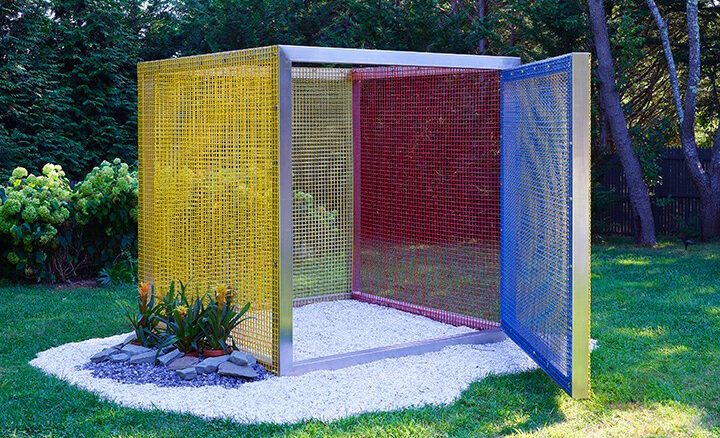
Penetrável Macaléia (1978) is among the last variations of the form that Oiticica conceived. Dedicated to Jards Macalé, the famous musician who was a dear friend of the artist. The design of this work was inspired by an epic party at Macalé’s house, which Oiticica wrote vividly about in his notes. Stage lights shone on the performers in this cage, covering their bodies in red, blue, and yellow.
As one enters the installation Penetrável Macaléia, the red, blue, yellow, and white mesh screens play subtle tricks on one’s perception, casting the world outside and within it in flickering colors. Dematerializing the object’s sides, the effect combines with the work’s lively backstory to subvert the weighty seriousness and austerity of Minimalist art and its iconic form, the cube. With the addition of gravel and live plants, the work playfully brings the “real world,” specifically the Global South, into the antiseptic space of art. Penetrável Macaléia functions brilliantly both inside and outside, always interacting with its surroundings and its participants, merging art and life.
Oiticica created various Penetrável walk-in installations that immersed the viewer in color within environments that evoked and celebrated the favela communities of Rio de Janeiro.
Hélio Oiticica (b. 1937, Rio de Janeiro; d. 1980, Rio de Janeiro) is a major figure in the history of late 20th-century art. Stretching from the mid 1950s to the artist’s death, the arc of his production begins with small, apolitical, abstract-geometric paintings, and ends in sensory-laden immersive environments and politically charged participatory projects.

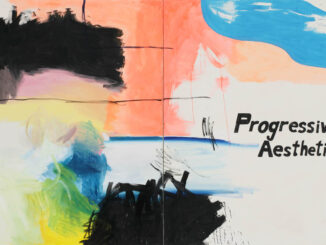
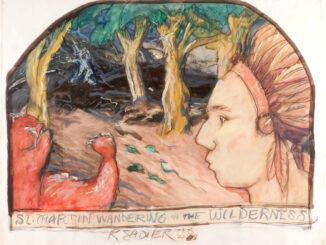
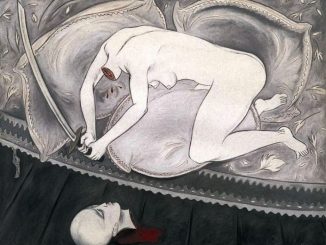
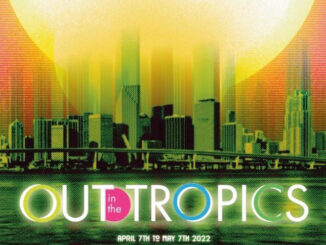
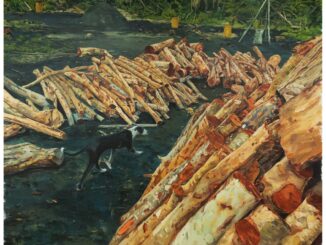
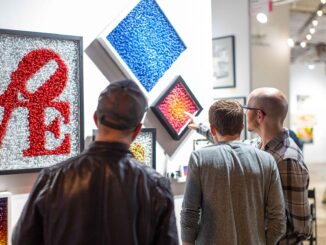
Be the first to comment